Genealogy Records 101
Iceland: Genealogy with a Twist
November 23, 2012 by ramona
Filed under Articles, Genealogy and Immigration, Latest News
 Most people are interested in genealogy as a hobby, an addictive search for a family tree whose roots are yet undiscovered.
Most people are interested in genealogy as a hobby, an addictive search for a family tree whose roots are yet undiscovered.
In Iceland however, genealogy takes on a broader importance. It becomes a necessity for singles with the natural desire to settle down and perhaps start a family.
Why… because with a current population of about 318,000 people whose ancestors have lived on this isolated island since the late Viking age (approximately the year 870) finding someone you are not closely related to can become a daunting task.
Not to worry, Icelanders have come up with a solution to the problem that gives a unique slant to genealogy research.
The Islendingabok
Their solution: the Islendingabok, an online genealogical database that holds the ancestral information of Iceland’s inhabitants going back 1,200 years. The Íslendingabók combines the science of medical genetics and some major software, with the aim of tracing the family relationships of the countries citizens since the time of settlement. It also uses techniques more familiar to family history research: such as church and census records.
The database allows Icelanders to make certain they are not about to become kissing cousins: however, it is in Icelandic only.
Icelandic Immigration
Although many descendants of Iceland’s original settlers stayed, there were also those who immigrated to North America.
Iceland near the end of the 19th century was a land of stark beauty. It was also a land of overwhelming hardships stemming from conditions of over population, economic adversity, violent volcanic eruptions and extreme cold. It was at this time that even some of the staunchest Icelanders left in search of greener pastures.
However, Icelandic nationalism remains as strong as the stories of home. Generations later, some Icelandic ex-pats feel the pull of heimthrá, or being in thrall of home. For descendents of those immigrants, there is a wealth of information concerning Icelandic genealogy on Hálfdan Helgason’s site dedicated to the Icelandic Emigration to North America.
More links to Icelandic genealogy can be found here…but before you go remember to download your FREE Family Tree Starter Kit available with your 30-day free trial to Genealogy Beginner.
Volunteers Needed at FamilySearch
August 31, 2012 by ramona
Filed under Articles, Family Search The LDS, Latest News
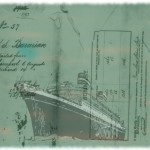 FamilySearch is in the news again with a new project that promises to be one of the most exciting yet for genealogy beginners.
FamilySearch is in the news again with a new project that promises to be one of the most exciting yet for genealogy beginners.
The new project focus is to index U.S. Immigration and Naturalization records as well as passenger lists, border crossing records and passports. The ultimate objective to indexing these records is to make them freely available for family tree enthusiasts looking for their immigrant ancestors.
The variety of information family history hunters can hope to discover from these records includes:
- Ancestor’s Names
- Names of Family or Friends they traveled with
- Place of birth
- Date of immigration
- Date and location of naturalization
- Port of origin
- Port of entry
- Name of ship
To reach this goal FamilySearch is once again inviting the genealogy community to join in and help with the indexing. You do not have to be a professional genealogist, in fact, all you need to do if you would like to become a volunteer on this project is register, sign in and download the indexing software.
To find out more details visit https://www.familysearch.org/us-immigration-naturalization/?icid=fsHomeUSImmNatTxt
Finding Your Ancestors in Trades Union Records
August 23, 2012 by ramona
Filed under Articles, Genealogy Occupational Records, Genealogy Records 101, Latest News
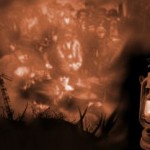 One of the very first things you learn as a genealogy beginner is to look in birth, marriage, death and census records for clues to uncovering your ancestral past. Then you learn about land records, sasines and other records associated with genealogy.
One of the very first things you learn as a genealogy beginner is to look in birth, marriage, death and census records for clues to uncovering your ancestral past. Then you learn about land records, sasines and other records associated with genealogy.
One often overlooked source of information for your family tree are trades union records.
The trade your ancestor worked in may hold valuable information. For example, the record of a tradesman can help you find an ancestor who has disappeared from the record or help you fill in the blanks of, where, when and why they changed locations between census. Quite often trades ran in families and you may even find generations of records if you are lucky.
For family history hunters with ancestors from the UK one record source you may want to track down is The Modern Records Centre. This unique resource is not genealogy specific nevertheless; they do have a number of collections that are genealogy gold.
The Modern Records Centre collection includes information on UK trade union employers that work as guide to help find specific records for individuals.
Some of the trades they cover include:
Blacksmiths, Forge & Smithy Workers
The Scottish United Operative Blacksmiths’ Protective and Friendly Society was recognized on 24 August 1857: records held in this collection are general registration books, 1857-1924. These records hold information on individuals however to find an individual you will need either their membership number or the year they joined the union. Another great resource in this collection is the monthly, quarterly and annual/financial reports (1858-1961). This set of records includes lists of deceased members and their spouses.
Joiners
The Amalgamated Society of Carpenters and Joiners/Amalgamated Society of Woodworkers hold membership records in three series. To find information on individual members you will need to know the branch to which your ancestor belonged.
· What the collection contains and what you can hope to find:
· Admission books (1895-1931): Your ancestors name, age when admitted, number of years in the trade, the date he was admitted, his marital status, if he recieved funeral benefits, excluded members and if he was transferred between branches.
· Registration books (1901-1921): Some of the information included are name, age when admitted, date admitted, marital status, date of marriage and name of branch, any benefits received and date of death or exclusion from the union.
· Reference books (1901-1921): The reference books contain lists of members in 1901, 1911 and 1921 that had transferred in another place.
· Annual reports (1920-1971): The most interesting thing about the Annual reports is that they contain obituaries of several members.
Railwaymen
There are several unions for railwaymen with records dating from so it will be very helpful to know exactly which union your ancestor was a member of. In spite of this, the collection has some of the richest genealogical holdings.
Annual reports of the Orphans Fund (1889, 1893-1912):
These records hold the details of payments made to the children of deceased members. To research the collection you will need to know the year(s) benefit were granted.
Record of accidents, inquests, Board of Trade enquiries, and legal cases (1901-1907):
This collection is indexed by branch and arranged in chronological order. It contains information on accidents and inquests and can tell you the date ,place and nature of an accident along with whether or not any compensation was paid or the outcome of an inquest. Researchers will need to know an approximate date of accident as well as the member’s branch.
The Modern Records Centre also holds union records for Boilermakers, Bookbinders, Bricklayers, Gilders, Ironfounders, Papermakers, Printing Workers, Quarrymen, Seamen, Shipwrights & Shipbuilders, Stonemasons and Telegraphists among many others.
Before you head off to research your ancestors trades take advantage of genealogybeginner.com’s 30-day free trial membership and download your Family Tree Charts and Research Tracking Forms today.
Newest FREE Family Tree Resources
July 21, 2012 by ramona
Filed under Articles, Family Search The LDS, Genealogy Records 101, Latest News
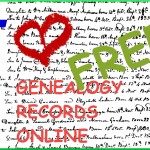 If you have been waiting for new genealogy resources to become available online, your wait may be over. The month of July 2012 saw some great additions to genealogy resources by FamilySearch.
If you have been waiting for new genealogy resources to become available online, your wait may be over. The month of July 2012 saw some great additions to genealogy resources by FamilySearch.
The new additions span the globe from the USA to Asia…some dating from the 1400s.
Keep reading for a complete list of the July’s new records:
| Record For | Record Type | Date Added |
|
United States |
||
| Alabama, Madison County | Chancery and Circuit Court Records, 1847-1950 | 10 Jul 2012 |
| California, San Mateo | County Records, 1856-1991 | 17 Jul 2012 |
| Indiana | Marriages, 1811-1959 | 7 Jul 2012 |
| Maine | State Archive Collections, 1790-1966 | 10 Jul 2012 |
| Missouri, Jackson | County Voter Registration Records, 1928-1956 | 17 Jul 2012 |
| Nevada | County Birth and Death Records, 1871-1992 | 10 Jul 2012 |
| New York, Orange County | Probate records | 10 Jul 2012 |
| Oregon | Douglas County Records, 1852-1952 | 10 Jul 2012 |
| Texas | Deaths, 1977-1986 | 19 Jul 2012 |
| United States | Census, 1940 | 6 Jul 2012 |
| United States | Social Security Death Index | 2 Jul 2012 |
| United States | Civil War Widows and Other Dependents Pension Files | 7 Jul 2012 |
| United States | National Homes for Disabled Volunteer Soldiers, 1866-1938 | 10 Jul 2012 |
| Utah | County Marriages, 1887-1937 | 6 Jul 2012 |
| Utah | Marriages 1887-1966 | 16 Jul 2012 |
|
Canada |
||
| Canada | Census, 1916 | 3 Jul 2012 |
| Nova Scotia | Vital Records, 1763-1957 | 3 Jul 2012 |
| Ontario | Marriages, 1869-1927 | 6 Jul 2012 |
| Quebec | Notarial Records, 1800-1900 | 17 Jul 2012 |
| Saskatchewan | Probate Estate Files 1887-1931 | 6 Jul 2012 |
|
Great Britain |
||
| Scotland | Census, 1881 | 2 Jul 2012 |
| Scotland | Census, 1891 | 2 Jul 2012 |
|
Western Europe |
||
| Italy, L’Aquila, Camarda, Parrocchia di San Giovanni Battista | Catholic Church Records, 1606-1941 | 3 Jul 2012 |
| Italy, Palermo, Diocesi di Monreale | Catholic Church Records, 1531-1998 | 3 Jul 2012 |
| Italy, Trento, Diocesi di Trento, Catholic | Catholic Church Records, 1548-1937 | 21 Jul 2012 |
| Italy, Vicenza, Casoni, Parocchia di San Rocco, | Catholic Church Records, 1597-1937 | 3 Jul 2012 |
| Spain, Province of Sevilla | Municipal Records, 1903-1918 | 10 Jul 2012 |
| Spain, Province of Tarragona | Records of Widows and Orphans of Spanish Officials, 1860-1960 | 10 Jul 2012 |
|
Eastern Europe |
||
| Czech Republic | Censuses, 1843-1921 | 10 Jul 2012 |
| Czech Republic | Land Records, 1450-1889 | 10 Jul 2012 |
| Poland | Roman Catholic Church Books, | 16 Jul 2012 |
| Slovakia | Church and Synagogue Books, 1592-1910 | 19 Jul 2012 |
|
South America |
||
| Chile, Santiago | Collection of Genealogies, 1500-1980 | 11 Jul 2012 |
| Chile, Santiago | Cementerio General, 1821-2011 | 11 Jul 2012 |
| Peru, Lima | Civil Registration, 1874-1996 | 11 Jul 2012 |
| Peru, La Libertad | Civil Registration, 1903-1997 | 2 Jul 2012 |
| Dominican Republic | Civil Registration, 1801-2010 | 11 Jul 2012 |
| Ecuador | Catholic Church Records, 1565-1996 | 2 Jul 2012 |
| Guatemala | Civil Registration, 1877-2008 | 3 Jul 2012 |
| Portugal, Braga | Catholic Church Records 1530-1911 | 11 Jul 2012 |
| Portugal, Castelo Branco | Catholic Church Records | 20 Jul 2012 |
| Portugal, Diocese of Lamego | Catholic Church Records, 1529-1916 | 11 Jul 2012 |
| Portugal, Diocese of Vila Real | Catholic Church Records, 1575-1975 | 11 Jul 2012 |
|
Asia |
||
| Korea | Collection of Genealogies, 1500-2009 | 10 Jul 2012 |
|
South Africa |
||
| South Africa | Free State Dutch Reformed Church Records, 1848-1956 | 19 Jul 2012 |
| South Africa | Orange Free State, Estate Files, 1951-2004 | 11 Jul 2012 |
| South Africa, Western Cape | Various Records | 10 Jul 2012 |
Before you tackle all of these new family history records and break your genealogy brick wall, remember to download your Research tracking forms and Family Tree Charts. Available with your 30-Day FREE TRIAL MEMBERSHIP to Genealogy Beginner
Ancestors in Debtor’s Prison
June 26, 2012 by ramona
Filed under Articles, Genealogy Institutional Records, Genealogy Records 101, Latest News
Prior to 1 869 in Great Britain, individuals who acquired debt could be sent to jail until their debts were paid in full. For many this could be a life sentence, not only for the insolvent individual but also for their entire family.
869 in Great Britain, individuals who acquired debt could be sent to jail until their debts were paid in full. For many this could be a life sentence, not only for the insolvent individual but also for their entire family.
As life without the main provider would most often mean severe poverty for the family of a debtor, entire communities began to spring up inside of debtor’s prisons resulting in children being born and raised inside them.
In the poignant story “Little Dorrit”, Charles Dickens delves into the lives of a family living in debtor’s prison. His inspiration for the tale is rooted in his own experiences, as Dickens own father was sent to debtor’s prison in 1824 for a debt of 40 pounds. Shortly after his incarceration, the rest of the Dickens family with the exception of Charles who at the tender age of 12 was employed and earning money to support his family joined John Dickens.
Although life in debtor’s prison was a harsh existence, there were allowances for debtors living in prisons with their families. A debtor with a little money would be able to pay for freedoms that might allow a prisoner to conduct business and receive social calls. A practice known as ‘Liberty of the Rules’ even allowed some prisoners to live a short distance outside the prison walls.
Debtor’s Prison Genealogy Records
Your best source of British records for finding information on insolvent ancestors in a debtor’s prison is at the British National Archives. This family tree search will take a great deal of patience as the records are not indexed and offer little detail.
Records held in this collection include:
· Registers and indexes of people served with petitions for bankruptcy (1884-1923)
· Bankruptcy case files (c.1759-c.1979)
· Records of Fleet Prison, Marshalsea Prison, Kings Bench Prison and Queens Prison (1628-1862)
· Registers of documents filed in bankruptcy proceedings (1733-1925)
For a quick online search findmypast has a bankrupt directory for 1820-1843 that includes details of all bankruptcies documented in The London Gazette for the period.
Forces War Records
June 23, 2012 by ramona
Filed under Articles, Genealogy Military Records, Genealogy Records 101, Latest News
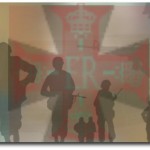 If you are searching for ancestors who served in the British Military Forces, you may want to check out Forces War Records; a new genealogy site that looks to be one of the best-organized search sites of its kind on the net.
If you are searching for ancestors who served in the British Military Forces, you may want to check out Forces War Records; a new genealogy site that looks to be one of the best-organized search sites of its kind on the net.
Forces War Records has over four million records for British Armed Forces personnel.
However, what makes this site special for family tree researchers is its search system. The records are cross-matched with bases, and regiments as well as Ships of the British Armed Forces, providing a usage that is easy to apply, accurate and time saving.
|
The Records Include
|
|
|
World War One World War Two Crimean War Databases Boer War Databases African Wars Databases Indian Mutiny Databases Napoleonic Wars Databases Medal Rolls |
Individual Battle Data Other Wars Casualty Lists Prisoner of War Records Royal Marines Databases Fighter and Bomber Command Losses Fleet Air Arm Data RFC/RAF List RN Losses |
|
Shot at Dawn Database and more !!!
|
|
The site has many cool features including:
- A free search for WWII POWs with information that lists
- Name
- Rank
- Service Number
- Regiment
- POW number
- Camp type/number and location plus notes.
- A free medieval search with search tips
- A community forum
- Tutorials
- A “Memories” section where you can record your own or read stories left by other members.
- Genes Magazine: an online journal that gives access to How to and historical articles.
Some other aspects of the site include the ability to save your searches and bookmark pages to your profile. Of course, registration is required to use the site and there is a reasonable fee for full access to records. Although the fees are reasonable, prospective users should be aware that they are in pounds sterling.
Before you get started on your search at Forces War Records, be sure to download Genealogy Beginners Military Research Tracking Form, available with your 30-day free trial membership.
The Grave Humor of Genealogy
June 12, 2012 by ramona
Filed under Articles, Genealogy Cemetery Searches, Latest News
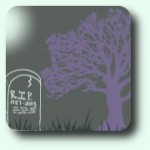 Genealogists have long used cemeteries as a source for finding ancestors in their family trees. Burial grounds are a repository of the history of people, they record lives lived and commemorate deaths.
Genealogists have long used cemeteries as a source for finding ancestors in their family trees. Burial grounds are a repository of the history of people, they record lives lived and commemorate deaths.
They are frequently filled with beautiful statuary, touching memorials and every so often …humorous remembrances.
Genealogy Fun
When doing a graveyard search, humor is not likely the first thing most genealogists and family historians have on their minds; the graveyard is a solemn place. However, if you stick with this hobby long enough you may run across some extremely entertaining memorials such as the following.
- Written on the gravestone for talk show host Merve Griffin:
“I will not be right back after these messages.”
- On the memorial of Mel Blank, famous for the voices of the Cartoon series Looney Tunes.
“That’s All Folks”
- Written on a tombstone in Thurmont MD:
“Here lies an Atheist. All dressed up and no place to go.”
- On the memorial of a certain Mr. Cook:
“Ma loves Pa- Pa loves Women. Ma caught Pa with 2 in swimming. Here lies Pa.”
- On a 1905 Gravestone:
“I told you I was Sick”
- On the grave marker for Robert Clay Allison (1840-1887):
“He never killed a man who did not need killing.”
- On the Grave of Anna Wallace:
“The children of Israel wanted bread, And the Lord sent them manna,
Old clerk Wallace wanted a wife, And the Devil sent him Anna.”
- On a stone from Burlington Vt.:
“She lived with her husband fifty years, And died in the confident hope of a better life.”
Another great tool for your cemetery searches is a Cemetery Visit tracking form. Get yours free with a Genealogy Beginner 30 Day Free Trial.
Genealogy Death Records: Cause of Death
May 25, 2012 by ramona
Filed under Articles, Genealogy Death records, Genealogy Records 101, Latest News
 Records of our ancestor’s deaths can reveal vital clues that help with tracing the family tree. Genealogists have long recognized the importance of the information held in these records such as names, dates and places.
Records of our ancestor’s deaths can reveal vital clues that help with tracing the family tree. Genealogists have long recognized the importance of the information held in these records such as names, dates and places.
However quite often, family historians want more than the dry facts. We want to get to know our ancestors through the paper trails they have left behind. Even more importantly, we sometimes want to learn more about a family history of disease.
Causes of Death in Your Family Tree
While obtaining these records has become easier over the years, understanding the cause of death is often a conundrum. Whether they are natural or accidental, causes of death can be extremely perplexing.
Even when they seem straight forward, like in the case of P. Sinclair whose death record stated lost at sea. After a good deal of research went into determining where he was lost at sea it was discovered that the term was often applied to sailors who had celebrated a little too heavily while on leave and drowned from drunkenly falling off the dock.
Making things more difficult are archaic medical terms that seem quite bizarre to our 21st century minds. It is hard to know what is meant when the cause of death cited is poisoned face.
Not all causes of death on old records are as extreme as the example above however they can still be a challenge. Here is a look at some common and not so common terms you are likely to run across in your research.

The causes of death found in ancestral records are as diverse and numerous…well, as our ancestors.
If you are interested in tracking this fascinating subject in order to research and document possible hereditary diseases, Genealogy Beginner recommends using our Major Milestones Tracking Form. Download yours today with your 30 Day FREE Trial.
“Who Do You Think You Are”, Episodes 1 & 2: Family Lore
February 16, 2012 by ramona
Filed under Articles, Genealogy Military Records, Genealogy Records 101, Latest News
 “Who Do You Think You Are” begins each episode by saying “To know who you are, you have to know where your story began”. Those words could not ring truer than in the first two episodes of season three.
“Who Do You Think You Are” begins each episode by saying “To know who you are, you have to know where your story began”. Those words could not ring truer than in the first two episodes of season three.
Episode One: Martin Sheen
With a colorful history of his own, Mr. Sheen has made headlines for his efforts as a civil activist supporting issues from liberal politics to environmental concerns. It was hardly a surprise to learn that his passionate outspoken nature may stem from ancestral roots on both sides of his family.
Mr. Sheen begins his genealogy journey with a little family lore. The subject of this family tree investigation is Michael Phelan, an uncle on his mother’s side, who was reportedly a volunteer in the Irish Republican Army.
To help Mr. Sheen uncover the truth behind the family tale, “Who Do You Think You Are” applies a number of research methods and utilizes all relevant resources.
In the first part of this episode, we see genealogical research conducted through an examination of:
The discoveries made during this systematic process uncovered an unexpected truth. For years, Mr. Sheen’s family had believed that their legendary ancestor fought on the side of the IRA. However, his visit to the Military Archives revealed that Michael Phelan actually fought for the opposing side…the Irish National Army.
Episode Two: Marisa Tomei
Marisa Tomei was the guest on the second episode of “Who Do You think You Are” season three. In this episode family lore also plays a big part in the Tomei family’s desire to dig in to their past.
The subject of the story is Marisa’s Great Grandfather Leopoldo, who was murdered for uncertain reasons. Family legend hints that the murder was motivated by a possible love affair or a debt he owed, shedding an unflattering light on this notorious ancestor.
As the Tomei story unfolds, “Who Do You Think You Are” takes us on a trip to Italy where Marisa wades through a maze of documents, research resources and consultations with experts who help her to examine:
However, before she leaves Marissa visits her mother who has uses a well know genealogy database to make a family tree.
Perhaps one of the most enjoyable components of family tree research is the family history aspect. Learning the truth behind stories passed from generation to generation. Often these stories have a grain of truth, rarely is it ever the whole truth as we see in the first two episodes of season three.
If you missed this episode of “Who Do You Think You Are”, join us in the forum The Discovery Panel for a link to where you can watch the episode online free. You didn’t think I was going to ruin the ending did you? Also, join us for a genealogy research tip based on the first two episodes.
Image Credit: Rav 7 Via Photobucket
November 2011: Discovery Kingsley Plantation Slave Cemetery
November 13, 2011 by ramona
Filed under Articles, Cemetery Searches, Genealogy Cemetery Searches, Genealogy Records 101
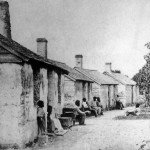 The rare discovery of a 19th century slave cemetery was made in the summer of 2010 by University of Florida anthropologist James Davidson. The site containing the skeletal remains of six individuals was found on the Kingsley Plantation, Fort George Island, Jacksonville Florida; home to the Timucuan Ecological and Historic Preserve. Working with the University of Florida’s archeological field school, Davidson, who led the expedition says,
The rare discovery of a 19th century slave cemetery was made in the summer of 2010 by University of Florida anthropologist James Davidson. The site containing the skeletal remains of six individuals was found on the Kingsley Plantation, Fort George Island, Jacksonville Florida; home to the Timucuan Ecological and Historic Preserve. Working with the University of Florida’s archeological field school, Davidson, who led the expedition says,
“We didn’t stumble over this by accident like so many of these discoveries, we had reason to believe this was here for a long time.”
The clues that led to discovery
Study of the Kingsley plantation began as early as 1968 by former University of Florida professor Dr. Charles Fairbanks, who conducted an excavation of a slave cabin on the site. Continuing this work, Davidson, following century old leads that depicted the site as being in close proximity to an old oak tree, found the site located slightly off the main road leading to the plantation house. Nearby were the remains of the old slave quarters. Several clues including square cut nails and a number of buttons helped establish a date for the burials. Osteological measurements (measurements of bones) indicated that the remains were of African descent, validating the authenticity of the site.
The remains
Of the remains discovered, there were three children, a woman of approximately 60 years old, a man of approximately 40 years old and a sixth body whose age and gender could not be determined. Out of respect for the dead all artifacts will remain at the site and will not be removed to another location.
Why this is important
Often buried without ceremony, with no grave markers left to characterize the lives of slaves or denote their passing. Archeological finds of this magnitude may give slaves and their descendants some resolution, in addition to well deserved acknowledgement. Although announcements of the discovery were suspended to permit further research and allow for the possibility of finding descendants; in this instance there is no way to identify the remains. No documentation has been found that could lead to the identification of living relatives.
Conclusion
Dr. Johnetta Cole, a descendant of the Kingsley family and director of the Smithsonian Institution’s National Museum of African Art, speaking in a press conference about the discovery states,
“My ancestral roots are so deeply planted in this place, you can’t know where you’re going if you don’t know where you’ve been. This discovery of an African burial ground, a burial ground of enslaved people, helps us to understand where all of us have been and now where and how we can go forward.”
